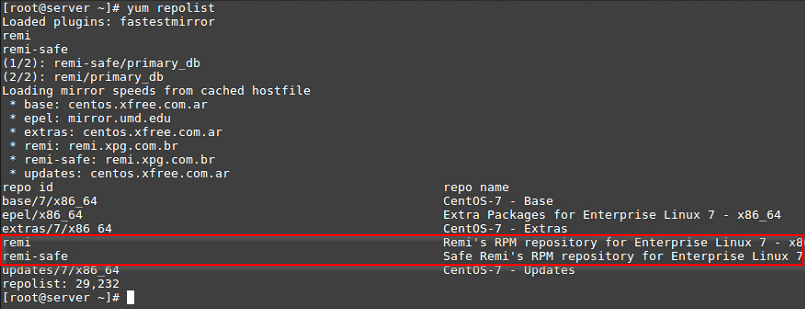If you are a system administrator, a developer, or a DevOps engineer, chances are that at some point you’ve had to set up (or work with) a LAMP (Linux / Apache / MySQL or MariaDB / PHP) stack.
The web and database servers, along with the well-known server-side language, are not available in their latest versions from the major distributions’ official repositories. If you like to play or work with cutting-edge software, you will need to either install them from a source or use a third-party repository.
In this article, we will introduce Remi, a third-party repository that includes up-to-date versions of Apache, MySQL / MariaDB, PHP, and related software, for RPM-based distributions. It is important to note, however, that Remi is currently available (at the time of this writing – April 2021) for the following distributions:
- CentOS 8/7
- Red Hat Enterprise Linux 8/7
- Fedora 34/33 and 32
With that in mind, let’s begin.
Installing the Remi Repository in CentOS, RHEL, and Fedora
Before we can actually install Remi, we need to enable the EPEL repository first. In Fedora, it should be enabled by default, but in CentOS and RHEL you will need to do:
Install Remi Repo in CentOS and RHEL
# yum update # yum install https://dl.fedoraproject.org/pub/epel/epel-release-latest-8.noarch.rpm [CentOS/RHEL 8/7] # yum install http://rpms.remirepo.net/enterprise/remi-release-8.rpm [CentOS/RHEL 8] # yum install http://rpms.remirepo.net/enterprise/remi-release-7.rpm [CentOS/RHEL 7]
Install Remi Repo in Fedora
# dnf install http://rpms.remirepo.net/fedora/remi-release-34.rpm [On Fedora 34] # dnf install http://rpms.remirepo.net/fedora/remi-release-33.rpm [On Fedora 33] # dnf install http://rpms.remirepo.net/fedora/remi-release-32.rpm [On Fedora 32]
By default, Remi is not enabled. To change this temporarily when you need it, you can do:
# yum --enablerepo=remi install package
where package represents the package you want to install.
If you want to enable Remi permanently, edit /etc/yum.repos.d/remi.repo and replace
enabled=0
with
enabled=1
A Closer Look at this Remi Repository
If you decided to enable the repository permanently as suggested earlier, it should be listed when you run:
# yum repolist
As you can see in the following image, another repository named remi-safe is available as well:

This repository provides extensions that are either deprecated (but still used in legacy applications), under work-in-process, or that do not comply with Fedora’s policies.
Now let’s search the newly added repositories for PHP-related packages as an example:
# yum list php*
Please note that packages in Remi have the same name as in the official repositories. Consider, for example, php:

If you need to install PHP 5.4, make sure to enable the right repository and disable the other.
To install the latest stable version of PHP 8, you can do:
------ for PHP 8 ------ # yum module reset php # yum module install php:remi-8.0 ------ for PHP 7 ------ # yum module reset php # yum module install php:remi-7.3
Similarly, to install the latest version of LAMP Stack, do:
# yum --enablerepo=remi install php httpd mariadb-server mariadb
Summary
In this article, we have explained how to enable and use Remi, a third-party repository that provides the latest versions of components of the LAMP stack and related software.
The official website provides a configuration wizard that can be very useful to set it up in other RPM-based distributions.
As always, don’t hesitate to let us know if you have questions or comments about this article. Just drop us a line using the form below and we will respond as soon as possible.
